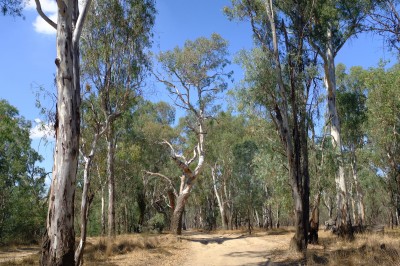Offsets explained

To protect Victoria’s biodiversity, a system of offsets seeks to balance the impact of the removal of native vegetation.
Whenever removal of native vegetation is proposed (for land development or construction), the ‘cost’ to local biodiversity must first be calculated. Then that cost is offset with the improvement & protection of a similar site.
Victorian Native Vegetation Offsets Explained - What are they and why do I need them?
Native vegetation offsets explained (the simple version, step by step):
- You have a project that will require the removal of native vegetation. Is it possible to avoid native vegetation altogether? Or minimise the clearance?
- Work out the ‘cost’ of native vegetation you are proposing to remove - your obligation.
- Find a matching site on the register to offset that cost (we can help with this).
- Apply for a permit to proceed with your project, and include your offset information.
- If your permit is approved, your offset obligations become a condition of that permit.
- Negotiate a price with an offset landowner with a matching site (this is our role).
- Sign contracts with the landowner.
- Document the transaction on the register.
- Begin removal of native vegetation.
Calculating biodiversity value of native vegetation
It is calculated according to the Victorian Government’s Guidelines for the removal, destruction or lopping of native vegetation (DELWP 2017).
To assess the biodiversity value of native vegetation the following is considered:
- the extent of the vegetation
- the condition of the vegetation
- if the vegetation is a habitat for a rare or threatened species.
The guidelines are an incorporated document in all Victorian planning schemes.
The value is measured in credits – your permit conditions will quantify the number of biodiversity offset credits you have to purchase. Similarly, an offset site landowner has a certain number of credits to sell according to the attributes of the native vegetation on their property.
Find out more about setting up offset sites – eligibility, assessment and contracts for landowners - here.
Trading credits with a suitable registered offset site
Offsets compensate for the vegetation being removed – the idea is to balance the impact on biodiversity on the project site with the protection and management of another site forever.
Offset sites, their details and value are listed on the Native Vegetation Offset Register.
As an offset broker, Vegetation Link identifies suitable sites for buyers. We broker credit trades with offset site landowners that meet the requirements of both Victorian and Federal regulations.
Matters of National Environmental Significance: “Federal” or EPBC Offsets
The Commonwealth Government is increasingly requiring offsets to minimise and mitigate the impacts of development. Listed threatened species and ecological communities are recognised as a matter of national environmental significance. Consequently, any action that is likely to have a significant impact on listed threatened species and ecological communities under the Environment Protection and Biodiversity Conservation Act 1999 (EPBC Act) must be referred to the Minister and undergo an environmental assessment and approval process. Find out more at Department of Environment and Energy: matters of national environmental significance.
Where the money goes
The fee paid by the offset buyer is held in trust by Department of Energy, Environment and Climate Action (DEECA) or Trust for Nature and paid to the offset site landowner in instalments over 10 years.